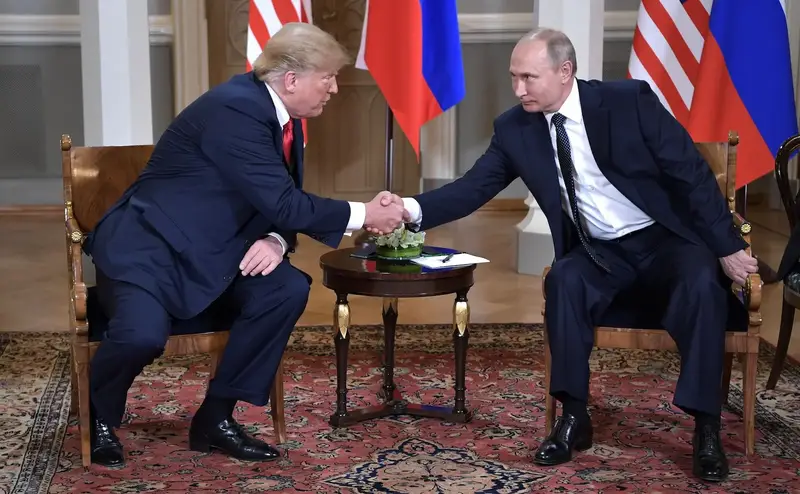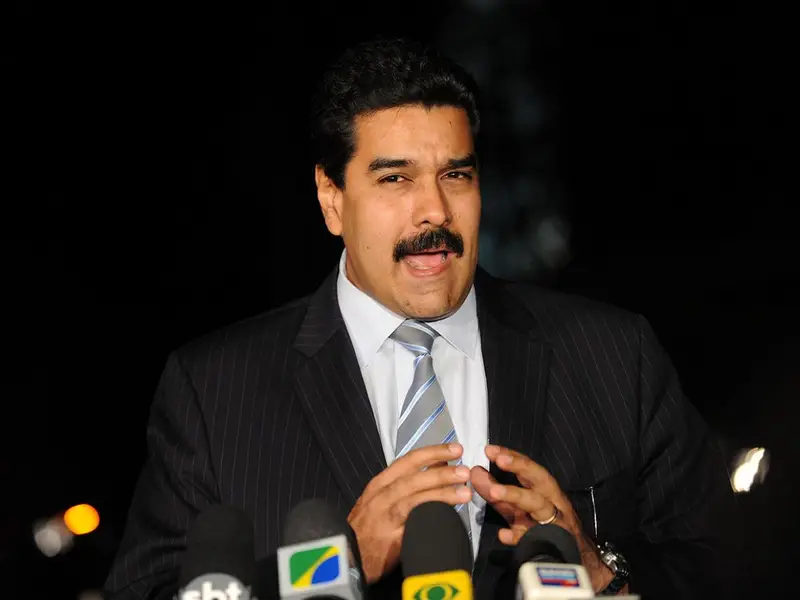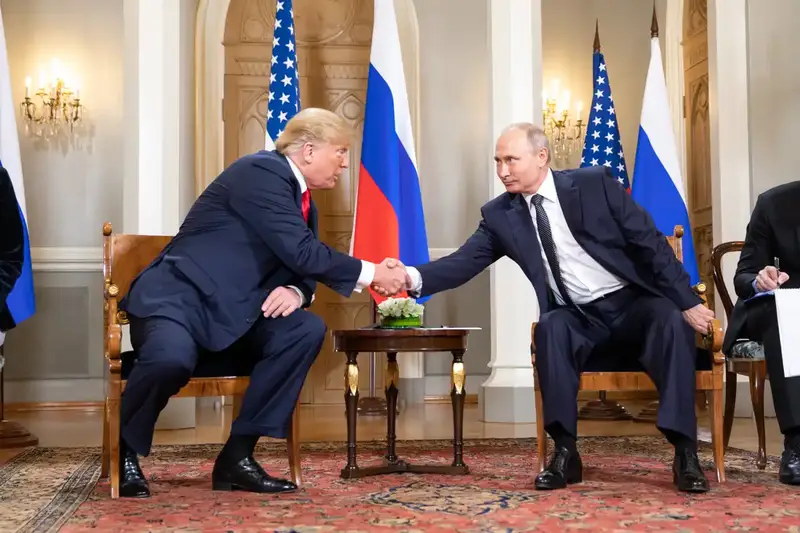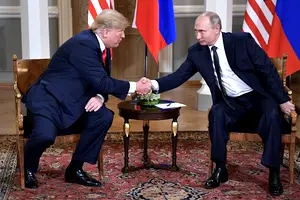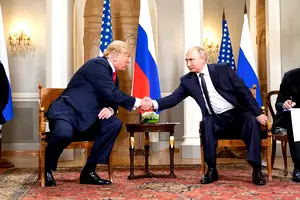Sino-American relations are built on suspicion and hostility from Washington, which seeks to constrain Beijing in every way possible.
According to U.S. Ambassador to Beijing Nicholas Burns, the U.S. and China will remain «systemic adversaries» for at least another decade. What will happen after that, or how things will evolve, he did not say. «We are systemic adversaries», Burns said at a forum on geopolitics, economics and finance organized by the Atlantic Council. «The U.S. — China relationship remains extremely competitive. We represent the two largest economies, the two strongest military powers, and have the greatest potential to influence other countries in the world… and so we have to be careful about how we build that relationship».
According to the ambassador, the main «strategic dilemma» is the need to simultaneously compete and «sometimes be partners» with China. This means maintaining the relationship within a framework of competition without sliding into open confrontation, in line with the so-called consensus reached by President Biden and Chinese President Xi Jinping.
And here, according to Burns, there have been some successes. In particular, the ambassador noted that the two countries have «managed to stabilize bilateral relations over the past 9–10 months», which had virtually ceased following former House Speaker Nancy Pelosi’s visit to Taiwan and the discovery of a Chinese balloon over U.S. territory. Today, the American diplomat believes that the countries have «reestablished the necessary channels for successful ministerial cooperation».
In fact, relations between Beijing and Washington cooled significantly during the administration of President Donald Trump, who launched a trade war with China. When Joe Biden and the Democrats came to power, the situation did not improve, but worsened. A series of incidents, including then-House Speaker Nancy Pelosi’s visit to Taiwan and the U.S. shooting down a Chinese balloon over U.S. airspace, led to a new round of diplomatic confrontation and China’s boycott of cooperation with the U.S. in several areas, including defense. Recently, a number of steps have been taken to normalize relations.
As we can see, however, systemic contradictions persist, and evidence of them emerges almost daily. Last week, China’s Ministry of National Defense called the United States «the greatest threat to peace and the source of war». «China is building peace in the world, contributing to global development, and upholding world order. Beijing strictly adheres to a defensive military policy and strengthens national defense», said Zhang Xiaogang, spokesman for China’s Defense Ministry. Meanwhile, according to the Chinese representative, Washington misunderstands China’s defense policy and wrongly accuses it of going beyond necessary defense measures. This was a reference to a recent anti-China remark by John Kirby, the National Security Council’s coordinator for strategic communications, who accused China of «investing in the development of strategic weapons without an agreement similar to the Russian-American Strategic Arms Reduction Treaty (START)».
In fact, China is adamantly refusing to even discuss the issue, arguing that its strategic nuclear arsenal is not comparable to that of the United States and Russia.
Nevertheless, the U.S. is very concerned that China is rapidly developing and modernizing its strategic arsenal. According to U.S. estimates, China has about 500 strategic nuclear warheads and delivery systems, and this arsenal is expected to grow to 1,500 by 2035. The Stockholm International Peace Research Institute (SIPRI) reported that the number of Chinese warheads increased from 410 in January 2023 to 500 in January this year. The U.S. and Russia, according to the same institute, have 3,708 and 4,380 active nuclear warheads, respectively (these figures do not include retired and not yet dismantled warheads, and Russia’s data are approximate, as the country stopped disclosing information about its arsenal in 2023). Some sources claim that the U.S. actually has more than 5,000 such warheads. This is why China refuses to engage in any negotiations on strategic nuclear arms control, which in turn worries Washington.
Another cause for concern came from China itself last week. For the first time in more than four decades, it conducted an intercontinental ballistic missile (ICBM) test outside its territory and publicly announced the event to the world on the same day. The launch «effectively tested the weapon’s characteristics and technology, as well as the level of troops’ readiness, and achieved the expected target», the Xinhua news agency reported. In keeping with tradition, the Chinese authorities did not provide any details. However, military experts believe that it is most likely one of the latest DF-41 ICBMs with a range of 12,000 to 15,000 km, which was first presented to the public during the parade celebrating the 70th anniversary of the People’s Republic of China in 2019. The land-based mobile missile is capable of reaching most of US territory, and its deployment area is covered by Russian and Chinese air defense systems. «This is extremely unusual, and probably the first such test in decades. It probably indicates China’s ongoing nuclear modernization in light of new testing requirements», said Ankit Panda, an American nuclear policy expert, in a comment to AFP.
The missile tests conducted by China were also commented on by the Kremlin. «This is China’s sovereign right. China is engaged in military development, and we respect that. Of course, within the framework of contacts between our two countries, including in the defense sphere, there is an exchange of necessary information», said Dmitry Peskov, the Russian president’s press secretary.
That’s right, China is developing its armed forces, including its strategic nuclear component. This is in line with the Chinese Communist Party’s plans and President Xi Jinping’s goal of building a «world-class» military by 2049, the 100th anniversary of the founding of the People’s Republic of China.
So what else is China supposed to do? Sit back and watch the United States heavily arm Taiwan and form aggressive military blocs around China? Just two weeks ago, U.S. President Joe Biden and the prime ministers of India, Japan and Australia discussed measures to contain China at a QUAD meeting. During this meeting, Biden claimed that China continues to behave aggressively in the region.
In response, China’s Foreign Ministry advised the U.S. to «abandon its policy of containing China and stop using regional countries as tools». Commenting on the summit’s outcome, Chinese Foreign Ministry spokesman Lin Jian said: «In the U.S. ‘Indo-Pacific strategy,’ QUAD is positioned as the main mechanism for regional leadership and serves as Washington’s tool to contain China and maintain American hegemony. The U.S. repeatedly claims that it is not targeting China, but the first topic of the summit was China; discussions about China were ubiquitous at the summit. They lie shamelessly, and even the American media do not believe it».
This is the kind of balancing act in the context of controlled rivalry. Meanwhile, following the introduction of 100% tariffs on Chinese cars, the U.S. is now discussing a complete ban on the import of vehicles made with the involvement of Chinese manufacturers and other «unfriendly» countries. This time, the White House is citing the national security threat posed by Internet-connected cars — essentially all modern models equipped with driver assistance and safety systems. U.S. Commerce Secretary Gina Raimondo said, her voice shaking, that «a foreign adversary could stop or take control of all vehicles in the United States, causing accidents or blocking roads». The plan includes a software ban for model year 2027 cars, which could go into effect in January 2026. The ban on equipment (such as lidars, cameras, etc.) is set to begin in early 2029, possibly even sooner. This measure will be one of many aimed at containing China’s technological development, which the U.S. openly states threatens its security.
In addition, Washington is considering a legislative ban on visas for members of the Chinese Communist Party, a group that now numbers over 100 million people. While the U.S. National Security Strategy identifies China as the primary threat, the Chinese Communist Party is seen as the primary and irreconcilable enemy. This, it seems, is the «systemic opposition» that the U.S. ambassador to China has observed.


